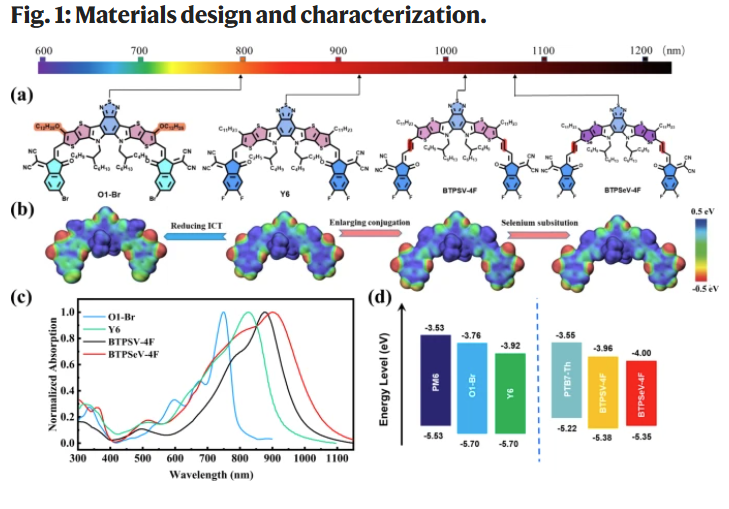Published in Nature Communications (March 2023), the article by Zhenrong Jia et al. investigates a novel ultra-narrow bandgap non-fullerene acceptor, BTPSeV-4F, which effectively suppresses triplet exciton formation in organic photovoltaic devices. This molecular design significantly reduces non-radiative losses, enabling tandem organic solar cells (TOSCs) to reach a power conversion efficiency of 19%, with record-setting short-circuit current density in the rear sub-cell.
High-resolution morphological characterization played a crucial role in correlating device performance with film formation and nanostructure. The authors used tapping mode-AFM
with gold-coated silicon cantilevers (PPP-NCHAu) from NANOSENSORS™ , known for their exceptional stability and tip precision.
By resolving subtle variations in surfacial architecture, researchers discerned how molecular packing, phase separation, and morphological uniformity influenced exciton dissociation and charge transport. The insights gleaned from AFM—enabled by PPP-NCHAu probes—were instrumental in validating the structural benefits of the BTPSeV-4F acceptor and optimizing the tandem device layout.
This study exemplifies how integrating high-performance NANOSENSORS™ PPP-NCHAu AFM cantilevers into research workflows enables precise morphological insights. Such capabilities are foundational in linking nanoscale structure to optoelectronic function—driving innovation in organic photovoltaics and the broader field of materials science.

a Molecular structures of the acceptors with arrows indicating absorption edge wavelength of the acceptor films. b ESP distributions for the simplified structures of O1-Br, Y6, BTPSV-4F, and BTPSeV-4F. c Absorption spectra of the O1-Br, Y6, BTPSV-4F, and BTPSeV-4F films. Source data are provided as a Source Data file. d Energy level diagram of the donors and acceptors.
This article contains images reused from Jia et al., Nature Communications 14, 1394 (2023), licensed under CC BY 4.0.